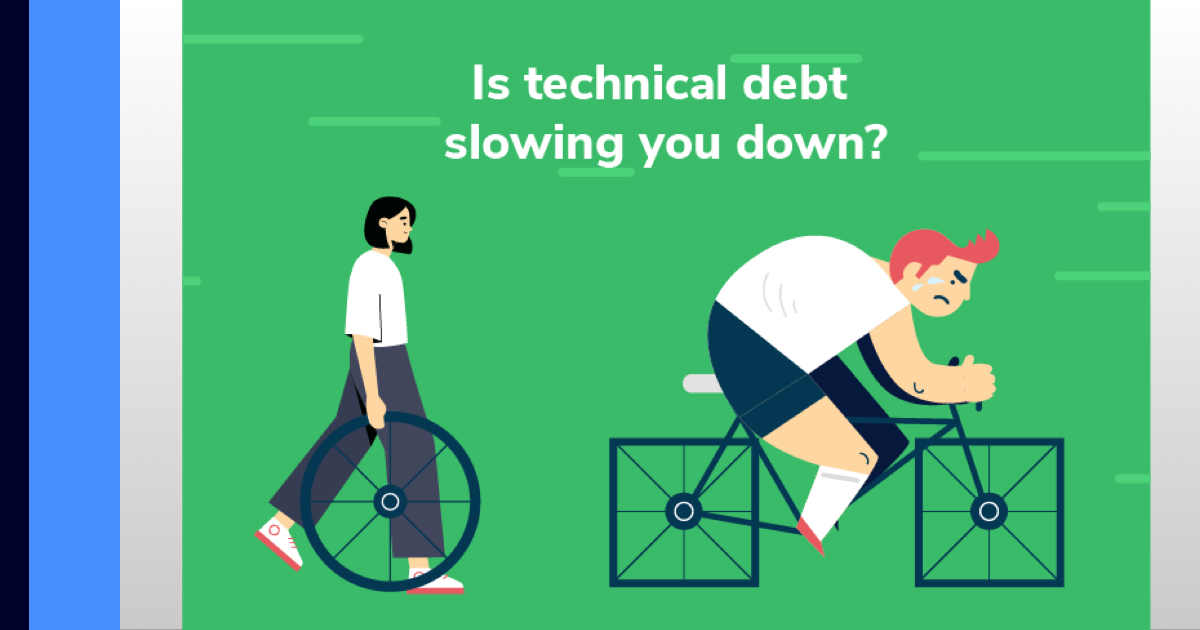Why Is Technical Debt Bad?
11 August 2021 4 min read

Audio Version Of This Article
What Is Technical Debt?
There are many ways to define technical debt, but to put it into simple words, it's the interest you have to pay when you choose the effortless short-ranged development choice instead of the challenging and elaborate one. Typically, this debt arises from using code that works perfectly fine for a short period of time but causes trouble in the long run. These kinds of quick and easy decisions lead to the cost of reworking the code in your program, leading to technical debt.
Causes Of Technical Debt
There are various reasons you can fall into the spiral of technical debt, the most common one amongst them being the lack of attention to long-term planning. Developers pay more attention to getting the software on the market rather than its long-term wearability. Often, creators can make the simple mistake of overseeing a harmful code which then results in technical issues. Similar to this, a faulty code or an easier one can also cause run time errors later. These practices later pile up in the form of technical debt, which not only deteriorates the quality of the product but can also cause delays in its delivery.
Why Is Technical Debt Bad?
Although technical debt works pretty well for some time, it causes trouble both to the software and the developer if not paid off within due time. Even if you do put up your software on the market, by having technical debt, the developer may be unable to keep the system up to date and may start getting complaints about its faulty nature. If this problem is not paid attention to at the right time, then the software may get signals of system failure. Moreover, the developer will have to spend more time solving this problem rather than working on updates.
This also causes a lot of issues in the team that is working on the software as well as the software itself because you have to make sure that the old interface and the new updated interfaces work together seamlessly. Even the slightest mistake may affect the workability of the software. Technical debt might seem like an easy solution in the initial developmental stages of a software, but it is very troublesome to both the creators and the clients after a short while.

Tips And Tricks To Avoid Technical Debt
There are several strategies that you can use to avoid technical debt. Some of these are listed below.
Fixing code
The real reason behind technical debt is a weak code which can be fixed even after the damage. The faster you fix your code and find a good alternative for it, the better your software will advance according to the needs of your customers. If you don't fix the code when you come to know about it, it may not work properly and will bound developers to work on old iterations rather than new ones.
Focusing on the code quality
When creating a software, it's important to focus on the structural integrity and code quality. It is important to give your time to each part of the project properly and finding things that will make it work even more smoothly. Instead of one person working on the project, a team with different perspectives can help develop a software even better.
Paying off your debt
It is imperitive to pay off your debt in a timely manner as it can cause a lot of problems in the future for the users. It is necessary for you and your team to work and fix the code so that it does not cause any more trouble than it already has. You should set a maximum threshold for the debt you can afford. Once it crosses that level, you should work on paying it off first.
Is All Technical Debt Bad?
Surprisingly not all technical debt is bad. Just like a financial loan, a technical debt can help in reaching your goals faster. However, if you don't plan to deal with the debt later, you might run into some problems. If you fail to address the debt when it is required to be, then it might come in the way of innovation and advancements that you may want to make in the software.
Like everything else in this world, technical debt also has its pros and cons. It may help you to get your software on the market faster, but at the same time, it may cause trouble if you don't take care of it on time. Therefore, it is best to start with a code that would do good in the long run. Even if you do manage to fix the code later, you still have to spend time in paying off the technical debt. So, it is best to start with a code that is beneficial to you and the software.
How To Reduce Technical Debt?
There are many ways through which you can avoid technical debts. Treating this debt like any other loan is the best approach for reducing it. You can set up upper limits for the tax debt you can afford. Similarly, you can also set deadlines for paying it off. This way, there is no excessive pile up of technical debt, and you can stay in control of the quality of your software. Overall, realistically, technical debt can never be zero, however, you should be able to manage it efficiently to guarantee the smooth running of your software.
Updated on September 6, 2021





